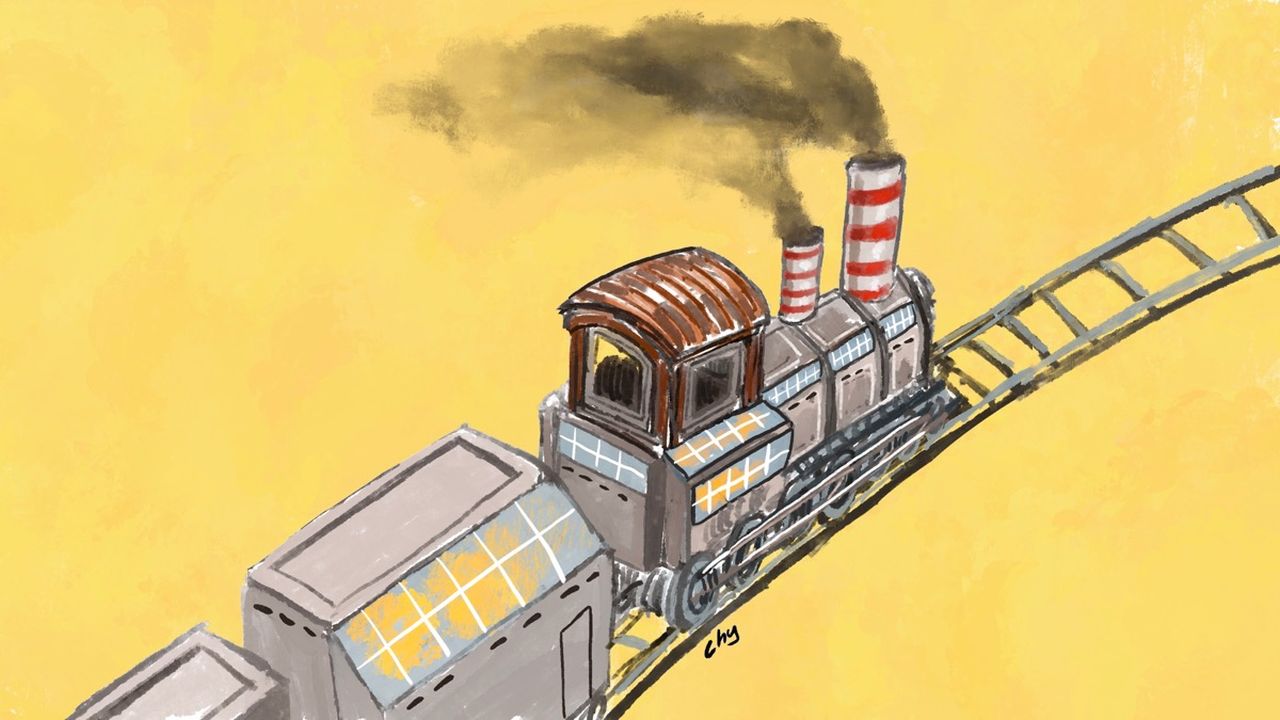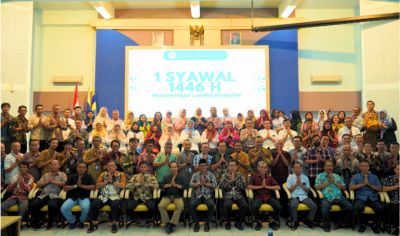 Choosing a strategic industry with high added value, for example electric car batteries, is the first step that needs to be taken. Followed by choosing production stages to build industry in Indonesia.
Choosing a strategic industry with high added value, for example electric car batteries, is the first step that needs to be taken. Followed by choosing production stages to build industry in Indonesia.
In mid-October, Indonesia was declared to have violated the provisions of the World Trade Organization (WTO) regarding the ban on nickel exports. Indonesia has appealed this decision. Following nickel, President Joko Widodo has also banned the export of bauxite and other mining commodities, tin and copper, will soon follow.
The President's policy can be understood because its economic value is multiplied by the downstream industry in the country. For nickel, export revenues increased almost 22 times compared to before the export ban was implemented. For bauxite, the increase in income is expected to be more than three times what it is now. Likewise copper, tin and other raw materials.
Getting Indonesia out of the middle income trap, at least with a solid foundation, is the President's promise in his second term of inauguration. Even though it is late, the downstream policy above deserves to be appreciated. Moreover, Indonesia's gross domestic product (GDP) per capita is still one third of the minimum limit for developed countries in 2021.
Also read: Processing Industry Encouraged, Raw Bauxite Exports Prohibited Starting June 2023
Keun Lee (2019) requires innovation capability to become a developed country. When industry has innovation capabilities, the products produced will have high added value so that economic growth increases. What is Indonesia's industrial strategy?
Innovation capability
The majority of policy makers are obsessed with turning their region into a second Silicon Valley. According to Dan Breznitz (2021), this obsession is wrong because with this policy, the economic growth of a region is less than optimal and the impact is only enjoyed by residents with certain competencies.
High added value is only enjoyed by a handful of people, but the majority of "ship passengers" are less affected.
As an illustration, the bicycle industry, which started in the early 19th century, has not shown any radical innovation in it until now. However, there are two big world players in it. Shimano as a transmission system manufacturer has become the world's dominant player.
It's hard to find a bicycle with a transmission system or other components without Shimano in it. Likewise with Giant, a Taiwanese bicycle manufacturer, with revenues of 2 billion US dollars per year.
A joint project carried out with the government's Industrial Technology Research Institute (ITRI) made Giant a global leader in producing bicycle frames made from carbon-fiber and other advanced materials.
This innovation capability resulted in American and European bicycle manufacturers becoming less innovative and losing market share, while Chinese and Indian manufacturers chose to focus on lower quality (and of course cheaper) bicycles.
The same thing happens in the smartphone, computer, automotive and even aircraft industries. It is increasingly rare to find manufacturers working on their products from design until they are ready for consumption. Globalization encourages fragmented production with each company focusing on innovating the components and/or systems in which they excel.
Fragmentation of production
Digitalization and increasingly integrated transportation make globalization well facilitated. Specialization occurs in various parts of the world with winners developing superior innovation capabilities at the production stage of a product.
Chris Miller (2022) describes Taiwan's strategic value in the chip war as playing a central role in a variety of high-tech products, from smartphones to electric cars. Taiwan Semiconductor Manufacturing Company (TSMC) supplies almost 54 percent of chips worldwide by focusing on fabricating chips based on designs from its customers.
Meanwhile, companies in Silicon Valley in California or Israel will focus on developing and designing new chips. This allows them to focus on managing the appropriate talent to develop the new chips being developed.
TSMC itself focuses on equipment investment with an investment value of up to 36 billion US dollars in 2022 alone and its fabrication process.
This specialization is what makes the company even more superior with its innovation capabilities.
In addition, economies of scale and scope at the production stage also play an important role. The existence of contract-manufacturing organizations (CMOs), such as Foxconn, which produces all Apple products, has an increasingly important role.
The ability to mass produce products, but flexibly, depending on the brand that uses its services and the support of telecommunications industry suppliers in China, makes its role crucial for the world.
William and Victor Fung did the same thing with the same function in the world textile and apparel industry. Nike, Timberland, Tory Burch, Balenciaga, even Prada are his clients.
Considering that each stage of production requires different innovation capabilities, of course the ecosystem that needs to be built is also different.
Breznitz divides four stages of production that can be chosen, both by organizations and countries, in developing their innovation capabilities. The choice will depend on the strengths and resources of each region and what advantages will be built in it.
First, novelty is the obsession of entrepreneurs, company leaders and policy makers from all over the world. This stage transforms new inventions into useful innovations.
This stage made Silicon Valley legendary with venture capital support for the development of new technologies and industries. Of course, the supply of talent is a necessity and this is supplied by the world's best universities in California and its surroundings.
If it is not found in the surrounding environment, digitalization makes it easier for talents from various worlds to join it. This is what makes the economic impact of this stage on a region not as big as the hopes that were pinned down.
Second, companies that have a good idea, but are hesitant to go straight into production, can utilize the services of design, prototype development, and production engineering companies.
In the telecommunications industry, the dominance of Taiwanese companies at this stage makes Silicon Valley, Tel Aviv and others very dependent on them. This stage is what enables Taiwan to provide high-income jobs from a variety of skills needed therein.
Breznitz divides four stages of production that can be chosen, both by organizations and countries, in developing their innovation capabilities.
Third, second generation products and component innovation. This stage produces incremental innovation by combining and expanding the uses of existing products. All the world's major car manufacturers are currently at this stage, including the roles of Shimano and Giant above.
Fourth, production and assembly as stages of combining hundreds or even thousands of components in a product that will be consumed.
Of course the components come from various parts of the world because of the fragmentation of production above. This stage is also related to a system that is capable of dynamically changing product specifications according to market needs.
China's Guangdong province is known for its diverse manufacturers of unbranded products. The ability of manufacturers built up over years to produce millions, even billions of products, modify them, and even stop them in a short time, makes them superior in the world.
This is what Foxconn or William and Victor Fung did. Hundreds of products from various brands from around the world take advantage of the best of their specialties.
Although rarely covered by the media, innovation at this stage generates jobs for millions of people and more even economic growth compared to start-ups like Silicon Valley or high-competence talent in Taiwan.
Recommendation
Competing with other countries in industrial sectors that rely on low costs (especially human resources/HR) or exploitation of raw materials is not the right choice to get out of the trap of middle-income countries.
Choosing a strategic industry with high added value, for example electric car batteries, is the first step that needs to be taken. Followed by selecting the production stages above to build industry in Indonesia. Breznitz's study shows that most regions focus on one of the above stages, but rarely is the combination of two or more of the above stages successful.
The most important thing is how the selected industry and production stage has a unique position and value so that the added value is high.
This election will also be the basis for determining what capabilities and innovation ecosystem will be built in Indonesia. The President emphasized the importance of managing the ecosystem for the electric car battery industry or other strategic industries that Indonesia will develop.
Also read: The Electric Vehicle Ecosystem Needs to be Built Holistically
It is important to follow up this direction by identifying each player in the industrial ecosystem that will be built. In the context of the electric car battery industry, of course the involvement of the central and regional governments as regulators is needed, especially the incentives that will be provided.
Also investors who will carry out downstreaming, financing institutions (banking), state-owned companies that will be involved, universities that teach ready-to-use human resources (both vocational and academic), communities where the industry operates, and other parties who contribute to this industry.
By identifying the resources, roles, added value provided, and what each party will gain (ecosystem pie model, Talmar et al., 2020), the ecosystem for the electric car battery industry or other strategic industries will work. As a result, the total linkage effect resulting from the industrial ecosystem will be able to become a new locomotive for Indonesia's economic growth.
Badri Munir Sukoco, Professor of Strategic Management, Faculty of Economics and Business, Director of Postgraduate School Universitas Airlangga
https://www.kompas.id/baca/opini/2023/01/18/strategi-industri-indonesia


























